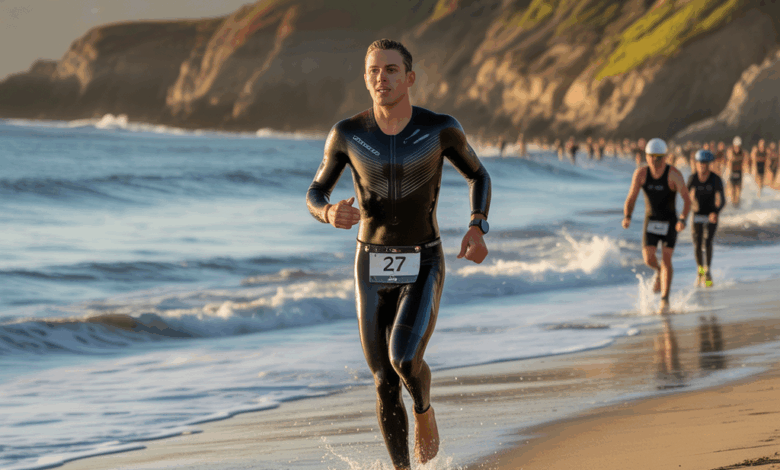Santa Cruz Triathlon Coastal Challenge: Your Ultimate Training Guide

Have you ever stood on the shore, wetsuit half-on, watching the sun hit the waves and wondered if you could conquer an ocean swim, a coastal bike route, and a sprint to the finish line? If that thought gives you a thrill (and a little anxiety), the santa cruz triathlon coastal challenge might be the perfect next goal to push your limits and fall in love with endurance sport.
Why the Santa Cruz Triathlon Coastal Challenge Is So Special
The santa cruz triathlon coastal challenge blends stunning ocean views with technical terrain—open-water currents, rolling coastal hills, and a finish that feels like a victory lap along the beach. It’s not just a race; it’s an experience that tests fitness, navigation skills, and mental grit. Whether you’re racing for a personal best or checking a tri off your bucket list, the combination of conditions makes preparation essential.
Training Principles: Building a Coastal Triathlon-Ready Body
To thrive at a coastal triathlon like Santa Cruz, focus on three pillars: consistency, specificity, and recovery. Below are practical, real-world training strategies you can fold into busy life.
1. Swim: Open-Water Confidence
- Start in the pool to build technique (bilateral breathing, efficient catch). Aim for 3 swims/week with one session dedicated to steady aerobic sets and one to speed work (e.g., 10 x 100m at threshold with 20–30s rest).
- Add one open-water session weekly when possible. Practice sighting every 6–8 strokes and drafting behind a friendly swimmer to conserve energy. Example workout: 10–15 min easy warm-up, 6 x 400m steady with 1–2 minutes rest, cool down.
- Wetsuit drills: practice swimming in the suit to understand buoyancy and range-of-motion changes.
2. Bike: Strength for Coastal Hills
- Include one long ride (progress to 2–3 hours depending on event distance) to build endurance.
- Interval sessions: 5 x 5 minutes at a hard effort with 3–4 minutes easy between to simulate coastal surges and climbs.
- Practice handling skills and cornering—coastal routes can be twisty and require comfort at speed. If your event includes technical descents, incorporate a few high-cadence drills and seated climbs.
3. Run & Brick Workouts
- Brick sessions (bike followed by run) are non-negotiable. Start with 30–45 minutes on the bike immediately followed by a 15–20 minute jog; progress to race-specific efforts.
- Tempo runs and hill repeats build coastal run strength: e.g., 6 x 2-minute uphill efforts with easy downhill recovery.
- Include one recovery run and focus on cadence (170–180spm for many age-groupers) to reduce fatigue.
The 12-Week Sample Training Cycle
Here’s a condensed outline you can adapt. Always tailor volume to current fitness and life commitments.
- Weeks 1–4: Build base — 3 swims, 2 bikes, 2 runs per week; emphasize technique and aerobic endurance.
- Weeks 5–8: Add intensity — include intervals, open-water sessions, and 1 longer brick per week.
- Weeks 9–11: Race sharpening — practice race-pace efforts, fueling strategy, and a rehearsal of transitions.
- Week 12: Taper — reduce volume 40–60% and keep short, sharp efforts to stay fresh.
Gear, Course Tips, and Race-Day Strategy
Equipment and course knowledge can make or break your santa cruz triathlon coastal challenge performance. Here’s what to prioritize:
- Wetsuit: Fit matters. Test it in open water. A snug but flexible suit improves buoyancy and efficiency.
- Bike setup: Tire choice and pressure affect handling on coastal roads. Consider slightly higher pressure for smoother coastal pavement and slightly lower for better grip on wet surfaces.
- Transitions: Practice your transitions like a mini-race. Time saved in T1/T2 adds up.
- Course reconnaissance: If possible, ride and run portions of the course beforehand to identify tricky sections and wind-exposed areas.
Nutrition, Hydration, and Recovery
Fuel smart so your legs and mind don’t fade when the wind picks up or a current pushes back. Practical advice:
- Race fueling: For sprint and Olympic distances, a carbohydrate-rich pre-race meal 2–3 hours before start is ideal. Use 30–60g of carbs/hour during longer efforts.
- Hydration: Coastal races can be deceptively dehydrating due to wind and sun. Sip electrolytes during your bike segments and replace sodium post-race.
- Recovery: Prioritize sleep, foam rolling, and protein within 30–60 minutes after training (20–30g protein). Incorporate active recovery days and at least one full-rest day weekly.
Real-World Example: From Couch to Coastline
Meet Sarah, a 40-year-old teacher who started training six months before the Santa Cruz event. She began with low-impact cross-training and two swims per week, adding structured bike intervals and weekly open-water sessions. By following progressive bricks and prioritizing recovery, she completed the coastal challenge without walking the run—proof that consistent planning beats short-term intensity.
santa cruz triathlon coastal challenge: Race-Week Checklist
- Confirm packet pickup and race-day logistics.
- Lay out transition gear and test shoes on a short run.
- Practice a very short swim if the water temperature or currents are new to you.
- Pack a small toolkit, spare tube, and nutrition you’ve trained with.
Frequently Asked Questions
Q1: What distance is the Santa Cruz Triathlon Coastal Challenge?
A1: Event distances can vary by year and organizer. Many coastal challenges offer sprint and Olympic options. Check the official race details for exact distances, but be prepared for typical sprint distances: a short open-water swim, a 10–20 mile bike, and a 3–6 mile run.
Q2: Is open-water swimming required, and how can I get comfortable with it?
A2: Yes, open-water swimming is usually part of the course. Start with pool drills to build technique, then move into calm open-water sessions for sighting practice, group drafting, and wetsuit familiarity. Joining a local masters swim or open-water clinic can accelerate your confidence.
Q3: How many weeks should I train for a coastal triathlon?
A3: If you have a base level of fitness, 8–12 weeks of focused training is effective. Beginners may need 12–20 weeks, starting with foundational aerobic work and gradually adding specificity and brick sessions.
Conclusion — Ready to Take on the Santa Cruz Challenge?
If the santa cruz triathlon coastal challenge is on your radar, start with a realistic plan, prioritize open-water practice, and build strength for coastal hills. Use structured workout routines, consult our nutrition guides for race fueling, and check our wellness tips to optimize recovery. Sign up for a local swim clinic or book a guided ride along the coast—small steps today lead to a memorable race day.
Ready to get started? Pick one swim, one bike, and one brick this week and commit. Share your progress and questions—your coast-to-finish story starts now.





